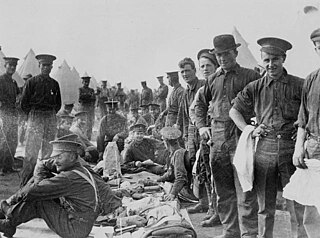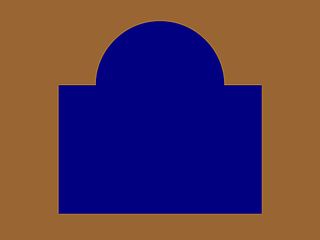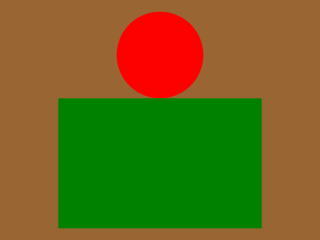
The 58th Battalion, CEF was an infantry battalion of the Canadian Expeditionary Force during the First World War.

The 29th Battalion (Vancouver), CEF was an infantry battalion of the Canadian Expeditionary Force during the Great War.

The 22nd Battalion, CEF, was an infantry battalion of the Canadian Expeditionary Force in the Great War.

The 78th Battalion, CEF was an infantry battalion of the Canadian Expeditionary Force during World War I. The 78th Battalion was authorized on 10 July 1915 and embarked for Great Britain on 20 May 1916. It disembarked in France on 13 August 1916, where it fought as part of the 12th Brigade, 4th Canadian Division in France and Flanders until the armistice. The battalion was disbanded on 15 September 1920.

The 50th Battalion (Calgary), CEF, was an infantry battalion of the Canadian Expeditionary Force during the Great War. The 50th Battalion was authorized on 7 November 1914 and embarked for Britain on 27 October 1915. The battalion disembarked in France on 11 August 1916, where it fought as part of the 10th Canadian Infantry Brigade, 4th Canadian Division, in France and Flanders until the end of the war. The battalion was disbanded on 30 August 1920.

The 2nd Canadian Mounted Rifles Battalion, was authorized on 7 November 1914 as the 2nd Regiment, Canadian Mounted Rifles, CEF. The battalion recruited in Victoria and Vernon, British Columbia and was mobilized in Victoria. An earlier incarnation was raised for Boer War.

The 11th Battalion, CEF, an infantry battalion of the Canadian Expeditionary Force, was authorized on 10 August 1914 and embarked for Great Britain on 30 September 1914. It was redesignated as the 11th Reserve Infantry Battalion, CEF, on 29 April 1915, to provide reinforcements to the Canadian Corps in the field. On 4 January 1917, its personnel, along with the personnel of the 100th Battalion, CEF, were absorbed by a new 11th Reserve Battalion (Manitoba), CEF. The battalion was disbanded on 12 October 1917.

The 102nd Battalion, CEF, (initially the 102nd Battalion (Northern British Columbia), then after August, 1917, the 102nd Battalion (Central Ontario), CEF) was an infantry battalion of the Great War Canadian Expeditionary Force.
The 18th Battalion, CEF, was an infantry battalion of the Canadian Expeditionary Force in the Great War.

The 4th Battalion, Canadian Mounted Rifles was authorized on 7 November 1914 as the 4th Regiment, Canadian Mounted Rifles, CEF and embarked for Britain on 18 July 1915. It disembarked in France on 24 October 1915, where it fought as part of the 2nd Brigade Canadian Mounted Rifles until 31 December 1915, when it was converted to infantry and allocated to the 8th Canadian Infantry Brigade, 3rd Canadian Division. The regiment was redesignated the 4th Battalion, Canadian Mounted Rifles, CEF on 1 January 1916 and was disbanded on 6 November 1920.

The 25th Battalion, CEF was a unit in the Canadian Expeditionary Force during the Great War. It was the second infantry battalion of ten to be raised in Nova Scotia during the war. The 25th served in Belgium and France as part of the 5th Canadian Brigade, 2nd Canadian Division from 16 September 1915 until the end of the war. Regimental headquarters were established at the Halifax Armouries, with recruitment offices in Sydney, Amherst, New Glasgow, Truro and Yarmouth. Of the 1000 Nova Scotians that started with the battalion, after the first year of fighting, 100 were left in the battalion, while 900 men were killed, taken prisoner, missing or injured.

The 24th Battalion, CEF, was an infantry battalion of the Canadian Expeditionary Force during World War I.

The 28th Battalion (Northwest), CEF was an infantry battalion of the Canadian Expeditionary Force during the Great War.

The 42nd Battalion, CEF, was an infantry battalion of the Canadian Expeditionary Force during the Great War.

The 43rd Battalion, CEF, was an infantry battalion of the Canadian Expeditionary Force during the Great War.

The 44th Battalion (Manitoba), CEF, was an infantry battalion of the Canadian Expeditionary Force during World War I.

The 46th Battalion, CEF, was an infantry battalion of the Canadian Expeditionary Force during the Great War.

The 52nd Battalion, CEF, was an infantry battalion of the Canadian Expeditionary Force during the Great War.

The 54th Battalion (Kootenay), CEF, was an infantry battalion of the Canadian Expeditionary Force during the Great War.
The 15th Battalion, CEF was an infantry battalion of the Canadian Expeditionary Force during World War I. The 15th Battalion was authorized on 1 September 1914, embarked for Britain on 26 September 1914, and arrived in France on 15 February 1915. The battalion fought as part of the 3rd Canadian Brigade, 1st Canadian Division in France and Flanders throughout the war. The battalion was disbanded on 30 August 1920.


















